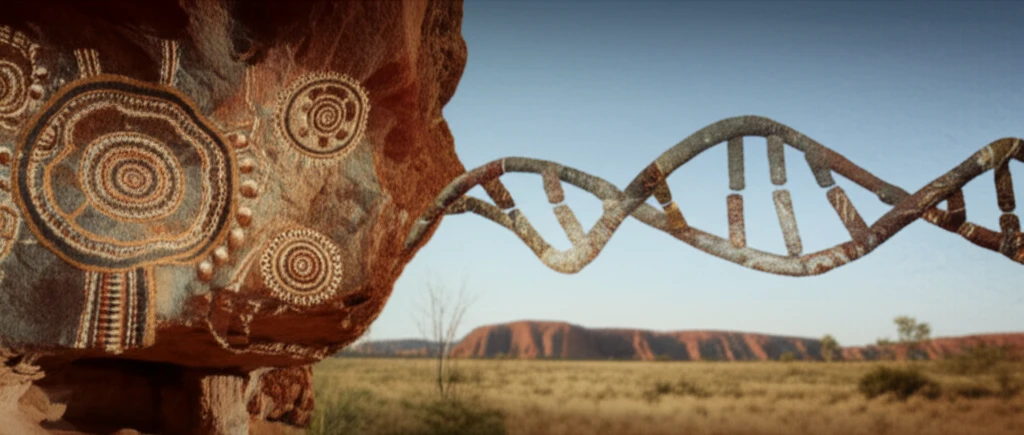
Unlocking the Past: How Ancient DNA is Rewriting Aboriginal Australian History and Enabling Repatriation
"Groundbreaking genomic research is helping to identify the origins of Indigenous remains, paving the way for their return to rightful communities."
For decades, museums and institutions around the world have held the ancestral remains of Indigenous people, often collected during colonial times under fraught circumstances. The repatriation of these remains is a deeply sensitive issue, carrying immense cultural and spiritual significance for Indigenous communities. Yet, in many cases, the exact origins of these remains have been lost, making their return to the correct communities a heartbreakingly difficult – sometimes impossible – task.
Now, a groundbreaking study published in Science Advances offers a beacon of hope. Researchers have successfully used ancient DNA analysis to trace the genetic lineages of pre-European Aboriginal Australians, opening up the possibility of identifying the origins of even unprovenanced remains. This has the potential to rewrite aspects of Aboriginal Australian history and, most importantly, facilitate the return of ancestors to their 'Place and Country'.
This article delves into the details of this landmark research, explaining the methods used, the key findings, and the profound implications for repatriation efforts and our understanding of Aboriginal Australian heritage. We'll explore how this scientific breakthrough addresses a complex ethical challenge, honoring the deep connection between Aboriginal Australians and their ancestors.
Deciphering Ancient Genomes: A New Path to Repatriation

The core challenge lies in the fact that many ancestral remains lack detailed records of their geographic origin, tribal affiliation, or language group. Museums and institutions are often reluctant to repatriate remains without clear evidence of their provenance, fearing they might return them to the wrong community. This is where ancient DNA analysis steps in, offering a potentially definitive way to link remains to specific regions and people.
- DNA in-solution capture methods: Targeted enrichment of DNA fragments for sequencing.
- Second-generation sequencing: High-throughput sequencing technology for analyzing DNA.
- Mitochondrial and Y-chromosome sequencing: Analysis of specific genetic markers to determine maternal and paternal lineages.
- Phylogenetic analysis: Reconstructing evolutionary relationships between individuals and populations based on genetic data.
A Future of Reconciliation: Returning Ancestors to Their Roots
The study's findings revealed substantial ancient population structure in Australia, demonstrating strong genetic affinities between ancient and contemporary Aboriginal Australians from the same geographic locations. This confirms that DNA-based methods can successfully identify the origins of unprovenanced ancestral remains.
While mitochondrial DNA analysis proved useful to some extent, the researchers found that nuclear genome analysis provided the most accurate and reliable results for repatriation purposes. The study emphasizes the importance of collaboration with Aboriginal Australian Traditional Owners and communities throughout the process.
This research marks a significant step forward in addressing the ethical imperative of returning Indigenous remains to their rightful communities. As DNA sequencing technologies continue to advance and become more accessible, this approach has the potential to transform repatriation efforts worldwide, fostering reconciliation and honoring the deep connections between people, their ancestors, and their land. This is not just about returning bones; it's about restoring cultural identity, spiritual connection, and historical justice.
